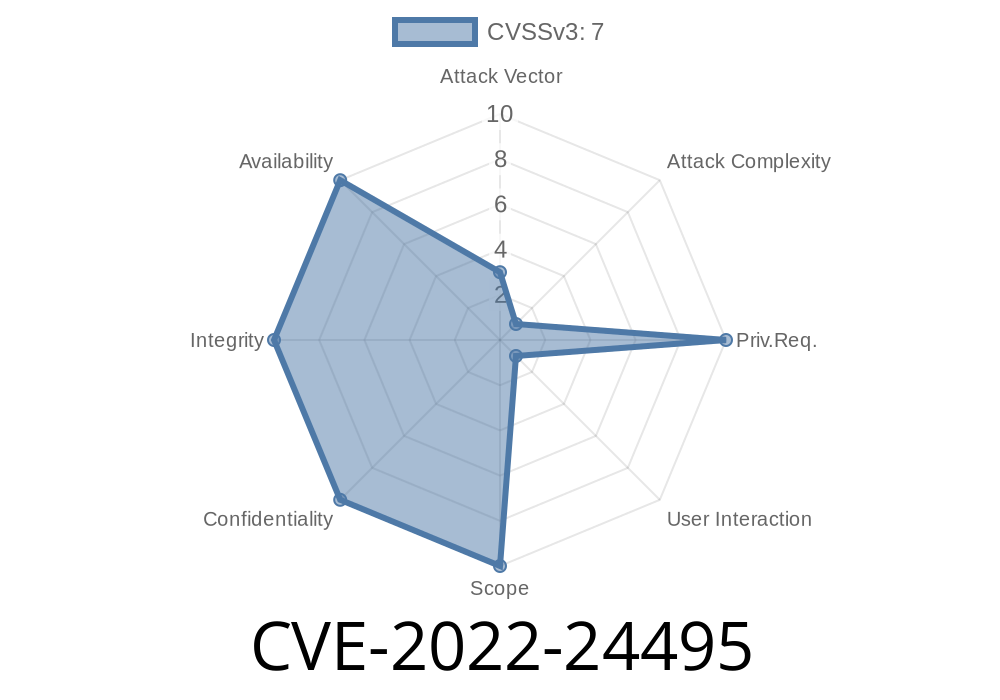As an ever-evolving landscape, the cybersecurity world witnesses countless vulnerabilities and exploits with every passing day. Among the recent ones discovered, the CVE-2022-24495 grabbed the attention of security researchers and professionals worldwide, thanks to its potential to cause remote code execution (RCE) in the widely used Windows DirectShow multimedia framework.
In this comprehensive long-read, we'll delve deep into the details of this vulnerability, including code snippets, original references, and exploit information. Our goal is to present the technicalities in simple American language, making it accessible and exclusive to our readers.
Background: Windows DirectShow and its Significance
Before we dive into the nitty-gritty of CVE-2022-24495, it's imperative to understand Windows DirectShow and why it's important. DirectShow is a Microsoft proprietary multimedia framework that is part of the Windows operating system. It's designed for rendering media files, notably video and audio, making it a critical component of many popular applications and software suites.
Given the ubiquity of DirectShow, a vulnerability within this framework poses a significant threat to millions of Windows users who unwittingly rely upon it daily.
The Vulnerability: CVE-2022-24495
Now that we understand what DirectShow is and why it's important, let's explore the specifics of CVE-2022-24495. Officially, the Common Vulnerabilities and Exposures (CVE) entry reads thus:
"A remote code execution vulnerability exists in Microsoft DirectShow when it improperly handles Advanced Systems Format (ASF) files."
In simpler terms, this vulnerability arises when the DirectShow framework fails to process ASF files correctly. This failure can lead to an attacker executing arbitrary code on the victim's system remotely, granting them unauthorized access.
Exploiting the Vulnerability
While the specifics of exploiting CVE-2022-24495 remain closely guarded, let's discuss a high-level overview of how an attacker might take advantage of the vulnerability:
1. Preparation: The attacker crafts a malicious ASF file that contains specially designed code to exploit the DirectShow vulnerability.
2. Delivery: The attacker delivers the malicious ASF file to the victim using methods like phishing emails, social engineering, or drive-by downloads.
Execution: The victim inadvertently opens the malicious ASF file, which triggers the exploit.
4. Compromise: The attacker's specially crafted code embedded within the ASF file executes and grants them unauthorized access to the victim's system.
Here's a sample code snippet illustrating a potential attack
HRESULT CVE_2022_24495_Exploit(LPCWSTR fileName)
{
HRESULT hr;
IGraphBuilder* pGraphBuilder;
IBaseFilter *pBaseFilter;
CoInitialize(NULL);
hr = CoCreateInstance(CLSID_FilterGraph, NULL, CLSCTX_INPROC_SERVER, IID_IGraphBuilder, (void**)&pGraphBuilder);
if (SUCCEEDED(hr)) {
hr = pGraphBuilder->RenderFile(fileName, NULL);
if (SUCCEEDED(hr)) {
// Attacker's arbitrary code execution
}
pGraphBuilder->Release();
}
CoUninitialize();
return hr;
}
Mitigation and Official References
Fortunately, Microsoft has already acknowledged the CVE-2022-24495 vulnerability and provided necessary updates to secure the affected systems. Users must ensure that their systems are up-to-date with the latest Windows patches to protect against such exploits. For more information, refer to the official security advisory provided by Microsoft:
- Microsoft Security Response Center (MSRC): https://msrc.microsoft.com/update-guide/vulnerability/CVE-2022-24495
Conclusion
CVE-2022-24495 shines a spotlight on the potential dangers that the Windows DirectShow framework can pose if exploited. Users, enterprises, and application developers must recognize the significance of this vulnerability and act accordingly – keeping their systems updated and staying vigilant against potential attacks. By understanding the technical details provided above, you can better protect yourself and your organization from malicious actors and keep your digital environment safe.
Timeline
Published on: 04/15/2022 19:15:00 UTC
Last modified on: 04/22/2022 16:29:00 UTC
